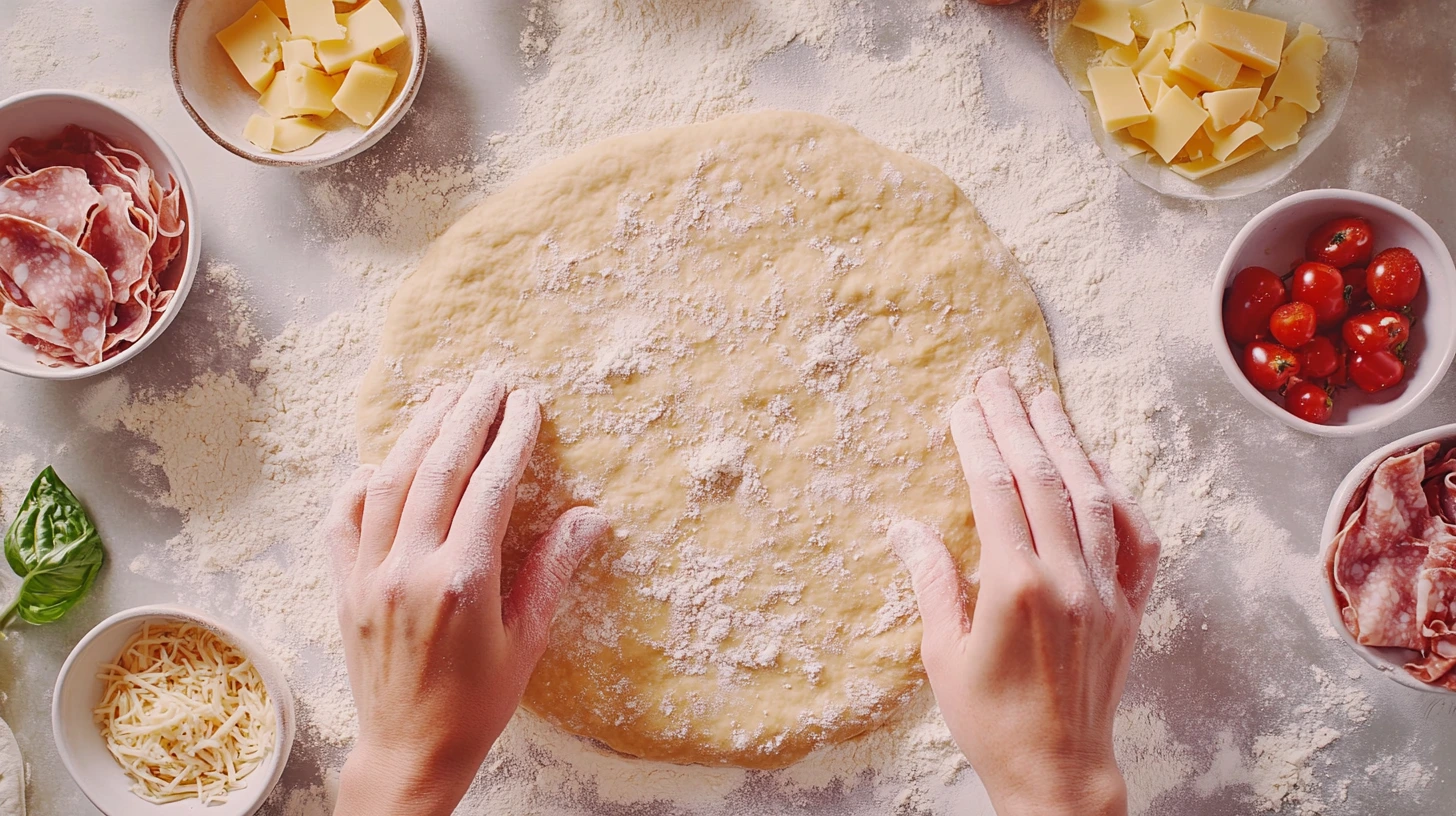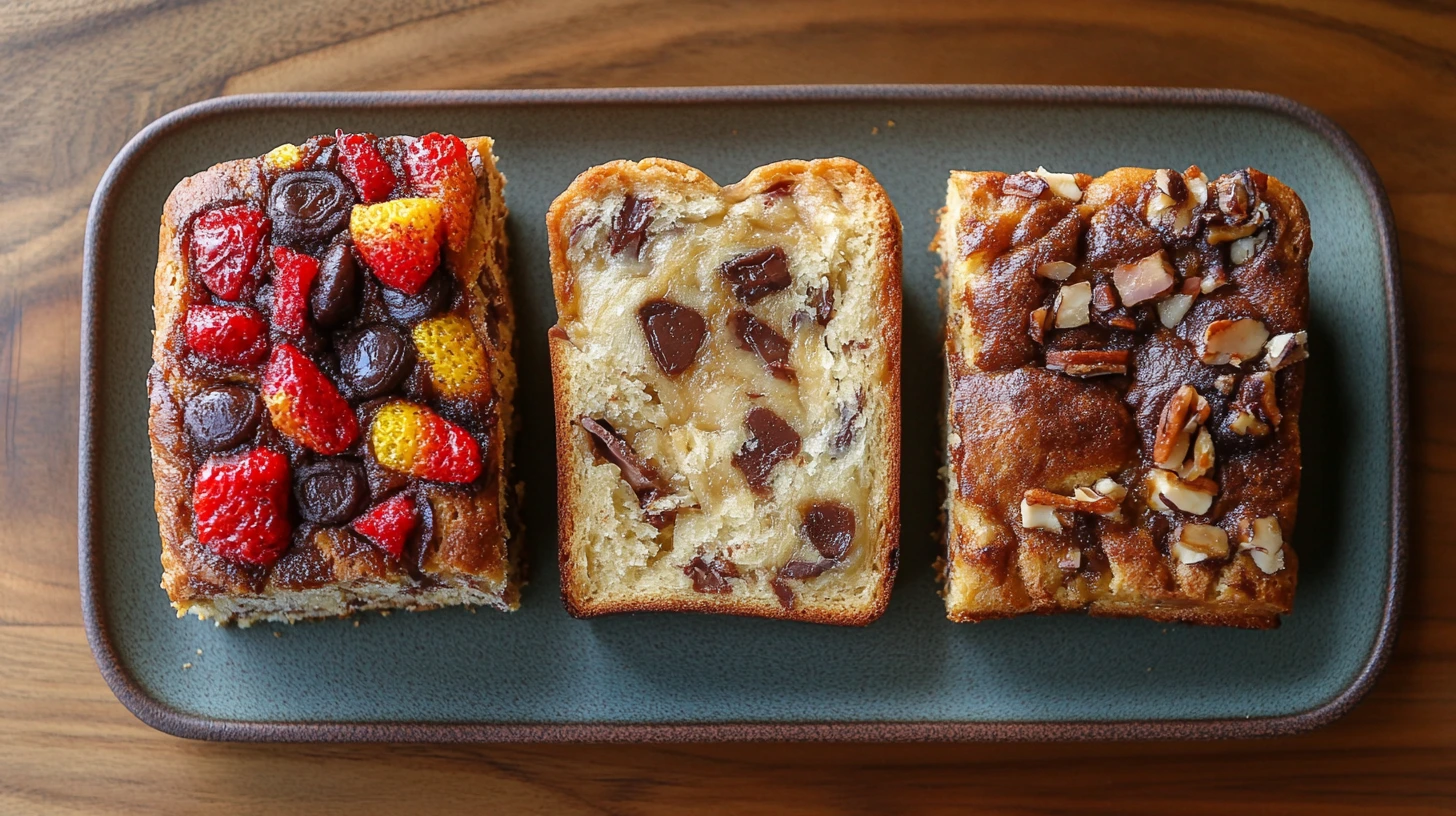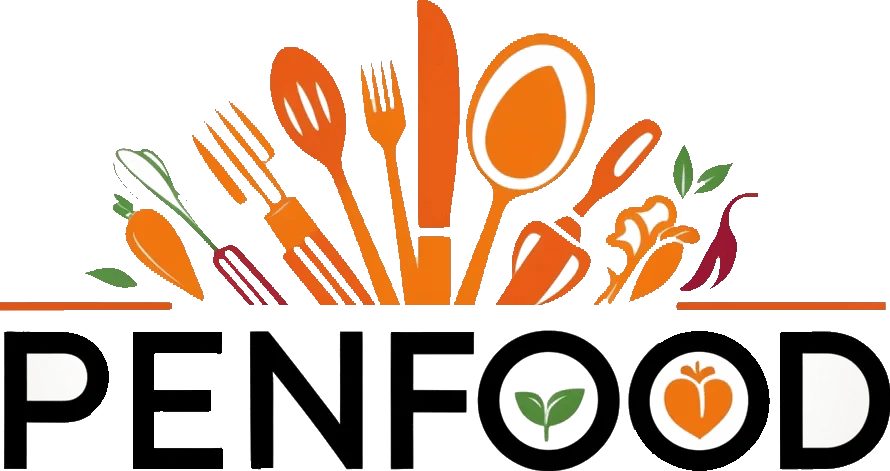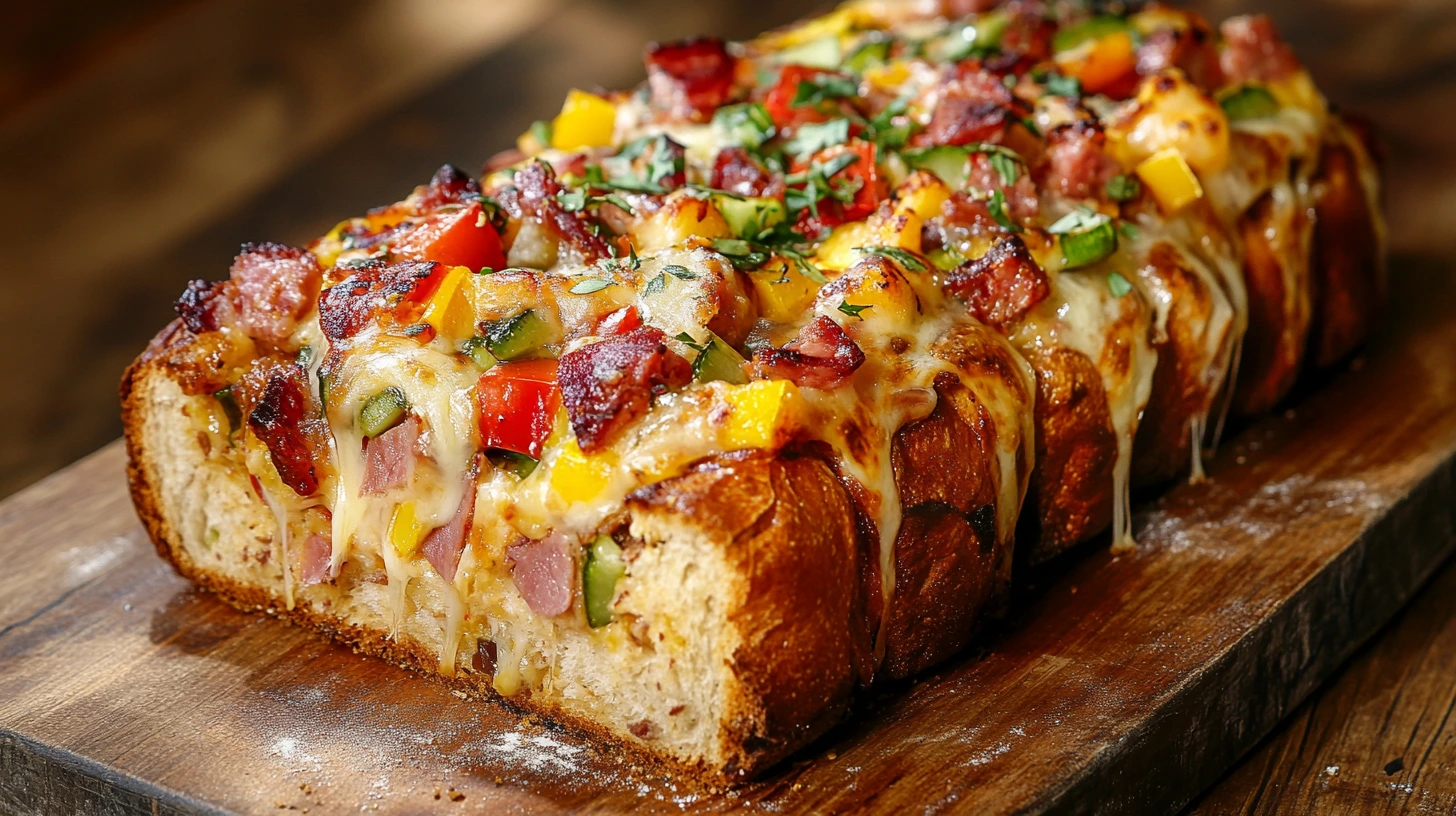Garbage bread, a dish as intriguing as its name, has become a beloved comfort food for many. Imagine taking a simple pizza dough, filling it with your favorite ingredients—whether it’s classic bacon and cheese, leftover spaghetti, or even spinach and artichoke dip—and rolling it all into a delightful, golden-brown loaf. This article dives deep into the world of garbage bread, exploring its origins, versatile recipe options, step-by-step preparation methods, and serving suggestions. From game-day snacks to weeknight dinners, this guide will inspire your culinary creativity.
Introduction to Garbage Bread
What Is Garbage Bread?
At its core, garbage bread is a stuffed bread roll, much like a stromboli, but with endless possibilities for fillings. The concept? Take leftover or fresh ingredients, wrap them up in pizza dough, and bake until golden. The result is a crispy, cheesy, and flavorful loaf that’s perfect for sharing—or not!
Why the Name “Garbage Bread”?
Despite its unappetizing name, the term “garbage bread” doesn’t reflect the quality of its ingredients but rather its inventive spirit. The name suggests a no-rules approach to cooking, where you can use whatever you have on hand—leftover meats, cheeses, vegetables, and sauces. Think of it as cleaning out your fridge, but in the most delicious way possible.
Origin and Evolution of Garbage Bread Recipes
While the exact origins of garbage bread remain unclear, it likely evolved as a practical way to reduce food waste. Over the years, the dish has gained popularity, especially as a game-day favorite and party food. Home cooks and professional chefs alike have embraced the concept, creating variations that cater to all tastes, from indulgent bacon cheeseburger versions to health-conscious veggie-packed options.
Ingredients for Garbage Bread
The Essential Components of Garbage Bread
Creating garbage bread is all about balancing simplicity and creativity. At its heart, this dish requires just a few basic components:
- Dough: Pizza dough works best, offering a soft yet sturdy base for the fillings. Store-bought dough is convenient, but making it from scratch gives you control over texture and flavor.
- Fillings: This is where you can get creative. From meats like ground beef, pepperoni, or shredded chicken to vegetables like bell peppers, spinach, or onions, the possibilities are endless.
- Cheese: No garbage bread is complete without a generous amount of cheese. Mozzarella, cheddar, and Velveeta are popular choices for their meltability and flavor.
- Seasoning and Sauces: Steak seasoning, garlic powder, or Italian herbs can elevate the flavor. Add sauces like marinara, ranch, or BBQ inside or as dips on the side.
Choosing the Best Dough: Pizza Dough vs. Homemade Options
While pizza dough is the most common choice, you can experiment with alternatives like crescent roll dough for a flakier texture or sourdough for added tanginess. If you’re feeling adventurous, try whole wheat or gluten-free options to cater to dietary preferences. Homemade dough offers the benefit of personalization, but pre-made options are perfect for busy cooks.
Common Fillings: From Bacon to Spinach
The beauty of garbage bread lies in its adaptability. Popular combinations include:
- Bacon Cheeseburger: Ground beef, crispy bacon, cheddar cheese, and a hint of ketchup.
- Veggie Delight: Sautéed spinach, mushrooms, onions, and mozzarella.
- Buffalo Chicken: Shredded chicken
Ingredients for Garbage Bread
The Essential Components of Garbage Bread
To create delicious garbage bread, you’ll need just a few staples that allow for plenty of creativity:
- Dough: Pizza dough is the classic choice, offering a stretchy, sturdy base. For a flaky twist, crescent roll dough or puff pastry works beautifully.
- Fillings: Use whatever you love or have on hand. Popular options include cooked meats like bacon, sausage, or chicken, paired with vegetables such as spinach, onions, or peppers.
- Cheese: The glue that binds everything together—try mozzarella, cheddar, or a mix of cheeses for an indulgent, melty interior.
- Seasonings and Sauces: Don’t forget the spices! Garlic powder, Italian herbs, and sauces like marinara or ranch add depth to your bread.
For related ideas, you might explore Philly Cheesesteak Rolls to adapt some of the savory filling techniques.
Choosing the Best Dough: Pizza Dough vs. Homemade Options
While store-bought pizza dough is quick and easy, homemade dough offers a personal touch and lets you tweak the texture. Gluten-free and whole wheat doughs are great for dietary needs. Pre-made crescent rolls provide a buttery alternative perfect for lighter bread.
Common Fillings: From Bacon to Spinach
The beauty of garbage bread lies in its versatility. Some favorite combinations include:
- Bacon Cheeseburger: Ground beef, crumbled bacon, cheddar cheese, and ketchup.
- Veggie Delight: Sautéed mushrooms, spinach, bell peppers, and mozzarella.
- Buffalo Chicken: Shredded chicken tossed in Buffalo sauce with blue cheese.
Get creative and use leftovers for a no-waste meal. Don’t hesitate to explore unique combinations, like those in Buffalo Chicken Dip Recipes, which could inspire savory fillings.
How to Make Garbage Bread: A Step-by-Step Guide

Preparing Your Ingredients: Meat, Cheese, and Veggies
Start by preparing your fillings. Cook meats thoroughly, drain excess fat, and chop any vegetables into small, manageable pieces. If you’re using soft cheese, let it come to room temperature for easier spreading.
Assembling the Bread: Tips for the Perfect Roll
Roll out your pizza dough into a rectangular shape, about 15×10 inches. Spread your fillings evenly, leaving a one-inch border to avoid overflows during rolling. For inspiration, you can adapt methods from Philly Cheesesteak Egg Rolls, where layering is key.
Starting at the long edge, roll the dough tightly into a log. Pinch the seams and ends closed to secure everything inside. Brush the top with an egg wash or melted butter for a golden finish.
Baking Techniques for a Golden Finish
Preheat your oven to 375°F (190°C) and line a baking sheet with parchment paper. Place your rolled bread seam-side down and bake for 20–25 minutes, or until the crust is golden brown and firm to the touch.
For an even cook, rotate the pan halfway through. Once baked, let it cool for 5–10 minutes to set before slicing into thick, hearty pieces.
Want to learn how to enhance the flavor even further? Try pairing your bread with dipping sauces like those from Philly Cheesesteak Sauces.
FAQs About Garbage Bread
What Are Some Unique Garbage Bread Fillings?
One of the best things about garbage bread is how adaptable it is to personal tastes and creativity. Aside from the popular bacon cheeseburger and Buffalo chicken options, you can try:
- Breakfast Garbage Bread: Eggs, sausage, hash browns, and cheddar.
- Mexican-Inspired: Ground beef, black beans, corn, jalapeños, and a sprinkle of taco seasoning.
- Dessert Twist: Nutella, bananas, and crushed hazelnuts for a sweet version.
Don’t hesitate to experiment with what’s in your fridge. Even leftover pasta or stir-fry can make a surprising and delicious filling!
Can Garbage Bread Be Made Ahead of Time?
Absolutely! Garbage bread is perfect for prepping ahead. You can assemble the bread the night before, wrap it tightly in plastic, and refrigerate it until you’re ready to bake. If freezing, assemble the bread and wrap it in aluminum foil before storing it in the freezer. When ready to bake, let it thaw overnight in the fridge and then bake as usual.
Is Garbage Bread Kid-Friendly?
Yes! Kids love the cheesy, handheld appeal of garbage bread. Plus, you can sneak in veggies like spinach or carrots by mixing them with melted cheese or flavorful meats. For picky eaters, stick with simple fillings like ham and cheese.
How Do I Avoid a Soggy Garbage Bread?
To keep your garbage bread from becoming soggy, ensure your fillings aren’t overly wet. Drain excess grease from meats and pat down ingredients like spinach or mushrooms to remove extra moisture. You can also sprinkle a layer of shredded cheese on the dough before adding the rest of your fillings, which acts as a barrier.
A Versatile Dish for Any Occasion
Whether you’re hosting a party, looking for a comforting family dinner, or just trying to clean out the fridge, garbage bread is a go-to option. It’s versatile, easy to customize, and endlessly satisfying. From hearty meat-and-cheese combinations to creative vegetarian fillings, this dish offers something for everyone.
Final Thoughts and Recipe Tips
To truly enjoy the magic of garbage bread, remember to have fun with it. The more creative you get with your fillings, the more unique and memorable your dish will be. Pair it with your favorite dipping sauces, like marinara or garlic butter, for added flavor.
If you’re looking for additional ideas, check out recipes like Philly Cheesesteak Egg Rolls for inspiration on combining bold flavors. Once you’ve mastered the basics, the possibilities for this crowd-pleasing bread are limitless.
Serving Garbage Bread
Best Ways to Serve Garbage Bread
It is as versatile in presentation as it is in preparation. For casual gatherings or game-day events, slice the bread into bite-sized pieces and serve it as a finger food. Arrange the slices on a platter with a variety of dipping sauces, such as marinara, ranch, or garlic butter, to enhance the flavor.
For a more formal setting, pair garbage bread slices with a crisp side salad or a bowl of warm soup. This creates a balanced meal that’s hearty yet satisfying. To elevate your serving game, consider garnishing the bread with fresh herbs like parsley or basil to add a touch of elegance.
Dipping Sauces to Elevate Your Dish
The right dipping sauce can take them to the next level. Here are a few crowd-pleasers:
- Classic Marinara: Perfect for pizza-inspired fillings.
- Creamy Ranch: A versatile option for veggie-packed or meat-filled bread.
- Spicy Sriracha Mayo: Great for Buffalo chicken or Mexican-style variations.
- Cheese Sauce: Ideal for kids and cheese lovers alike.
Offering a range of sauces lets everyone customize their experience and adds variety to your meal.
Storing and Reheating Garbage Bread
Proper Storage Tips
If you have leftover garbage bread—though it’s rare—storing it properly ensures it stays fresh and delicious. Wrap the cooled bread tightly in aluminum foil or place it in an airtight container. Store it in the refrigerator for up to three days.
For longer storage, freeze the bread. Slice it into portions before freezing for easy reheating. Place the slices in a freezer-safe bag, ensuring there’s no excess air to prevent freezer burn. Properly stored, garbage bread can last up to two months in the freezer.
Best Practices for Reheating
Reheating garbage bread is simple and keeps it just as tasty as when it was freshly baked. For refrigerated leftovers, warm slices in a 350°F (175°C) oven for about 10 minutes. This helps the crust regain its crispness while ensuring the filling is evenly heated.
If you’re short on time, the microwave works too, but use a low heat setting to avoid a soggy crust. For frozen bread, thaw slices overnight in the fridge before reheating for the best texture.
Nutritional Information for Garbage Bread
Understanding the Nutritional Value
While it is undeniably delicious, it’s also important to understand its nutritional content, especially if you’re mindful of your diet. The specific values depend on the ingredients used, but the table below provides an approximate nutritional breakdown per 100g of a standard bacon cheeseburger garbage bread.
| Nutrient | Amount (Per 100g) |
|---|---|
| Calories | 270 kcal |
| Protein | 12g |
| Carbohydrates | 25g |
| Fats | 14g |
| Saturated Fat | 6g |
| Fiber | 1g |
| Sodium | 550mg |

Customizing Nutritional Values
Since garbage bread is highly customizable, you can adjust the nutritional profile to fit your needs. Opt for lean proteins like turkey or chicken, use low-fat cheese, or include fiber-rich veggies to make a healthier version. For those following specific dietary plans, gluten-free or keto-friendly dough alternatives are also viable options.
This flexibility makes them a dish that can satisfy a wide range of nutritional needs and preferences. Let me know if you’d like to delve deeper into making your bread healthier!

